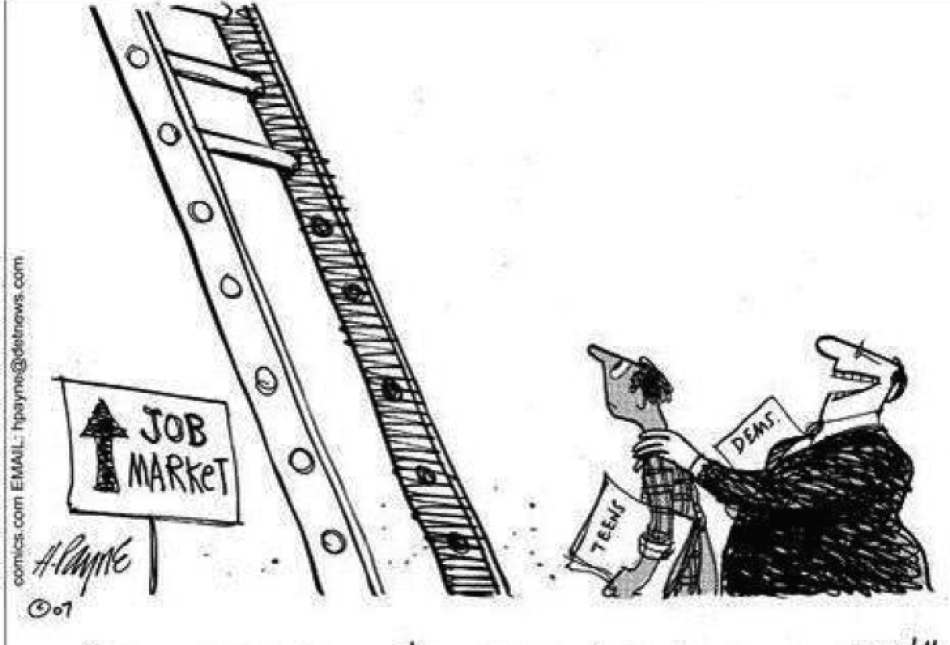Economy
post
Really want to harm the poor? Try the ‘Living Wage’

The proposal for a “living wage” is an ineffective way to help the poor. In fact, it is more likely to harm the poor. The reasons why are grounded in fundamental economics.
You don’t have to be an economist to understand that “living wage” proposals do not meet the test of common sense. Why not raise the wage floor much higher than is proposed? For example, why not raise the wage floor to $100 per hour? It does not take much reflection to understand that $100 per hour wage floor would not work. Why is it that common sense fails when the proposed wage floor is a mere $7.15 per hour? Principles of economics textbooks show clearly that wage floors result in surpluses of workers (unemployment). How does being unemployed help the unskilled poor? Actually, the wage floor for those unlucky persons who can’t find work as a result of the wage floor is ZERO dollars per hour. ZERO is the actual wage floor; and there is nothing government can do to prevent it. Unfortunately, minorities are more apt to find themselves in this situation as a result of “living wage” laws.
“Living wage” will be quite ineffective at helping the poor, even for the lucky workers who do find jobs. Firms will always find ways around the wage floor. The market for unskilled labor is highly competitive. As a consequence an unskilled worker’s effort must result in value of product equal to the worker’s total compensation, including that part of compensation that goes to training.
One way around the wage floor is for the firm to substitute capital for labor where possible. Repetitive tasks can often be automated in some way. A second way around it is for the firm to substitute higher wage for lower benefits where possible. It is the total compensation package that matters; and the firm will have wiggle room when that package includes non-wage benefits. A third way around it is to substitute non-wage labor for wage labor where possible. For example, the firm may move to piece rate compensation or contract separately for the needed function. A fourth way around it is to move outside the wage floor jurisdiction where possible; and potential firms can choose not to locate within the wage floor jurisdiction. A fifth way around it is to reduce or eliminate training of the unskilled where possible. At the higher wage floor more skilled workers will be attracted to previously unskilled jobs. If these ways of coping with the wage floor are not available, the firm can go out of business.
Much of the “living wage” argument is fueled by what proponents cite as evidence that it works. Unfortunately even a few economists have tried to prove in effect that water flows uphill. Prime among these has been the study by economists D. Card and A.B. Krueger (1994). David Neumark summarizes that study and the avalanche of evidence refuting it in his research summary “Raising Incomes by Mandating Wages.” Even though Card and Krueger have been thoroughly refuted, wishful thinkers advocating living wages continue to cite them as “proof” that water flows uphill. Fortunately, the vast majority of economists do not agree with them.
Some have claimed that the higher living wage will be spent, thereby stimulating the economy. This is pure nonsense; the higher wage floor will actually have a depressing effect. The money that goes to pay higher wages has to come from somewhere, such as from company profits or from consumers who have to pay higher prices and don’t spend as much elsewhere. The net depressing effect will come from the kinds of adjustments enumerated above.
Finally, I wonder about the morality of the living wage. What business does government have preventing voluntary trade between two individuals when no one else is harmed? Surely the individual worker, not the nanny state, can decide what is best for him or her. Moreover, if there is a principle that unifies the last three hundred years of economic research it is this: When two adults voluntarily consent to trade, each gains. The process of trading itself is what leads to prosperity for the traders. Why would we want to further reduce economic freedom to trade when the overwhelming evidence is that economic freedom is the real key to prosperity?
“Living Wage” Hurts the Poor
Subsequent to my statement of May 20, 2005 I have seen several more empirical claims that the living wage will not hurt the poor. These claims constitute voodoo economics in the extreme.
Many factors (such as tax climate, regulatory climate, education, local entrepreneurial opportunities, what is happening in other states and localities, what is happening in other countries, business cycles and so forth) in addition to the “living wage” determine whether a local economy expands or contracts. In order to tease out an economically sound estimate of the effect of the “living wage,” the empirical economist must account for all the factors. Empirical studies that purport to show that the “living wage” does not hurt the poor and perhaps even expands employment and helps the poor do not account for all factors.
Studies that do account for all factors show overwhelmingly that wage floors hurt the poor. And those hurt are the least effective interest group in society (minorities, low skilled, relatively uneducated). They have no voice in the matter. All many of them know is that there is no job available when they go looking. For them the legal living wage becomes ZERO.
An excellent summary of the history and all the empirical evidence of wage floors may be found in: David Neumark in his research summary “Raising Incomes by Mandating Wages.” There are lots of things we can do to help the poor. The “living wage” idea is not only ineffective; it is counterproductive.
